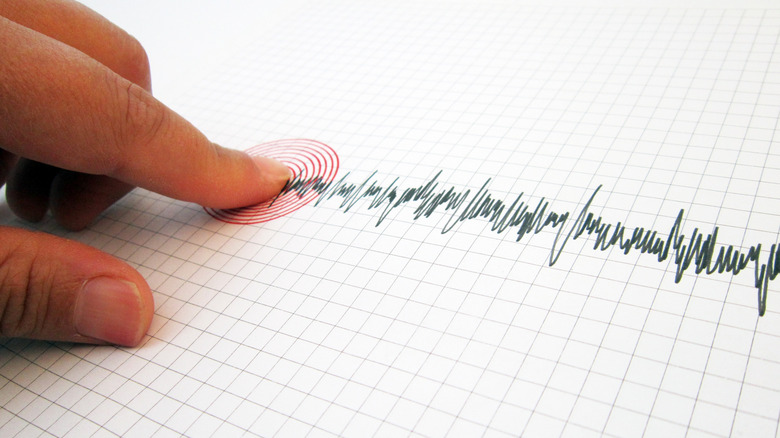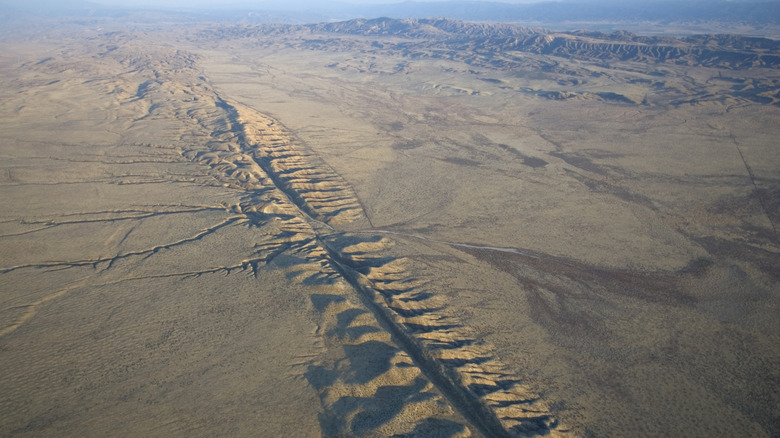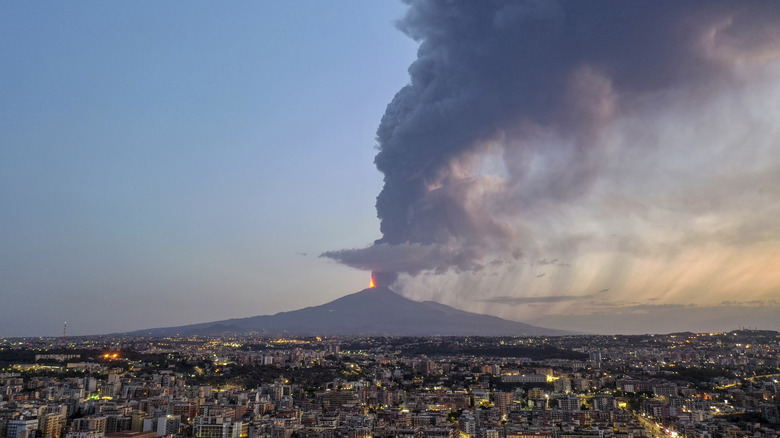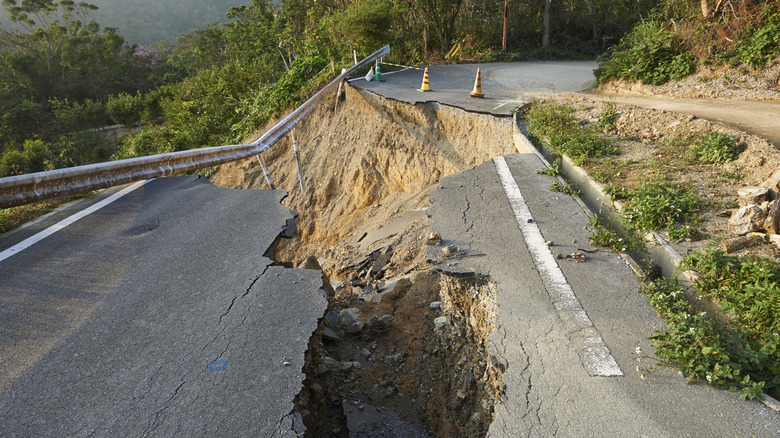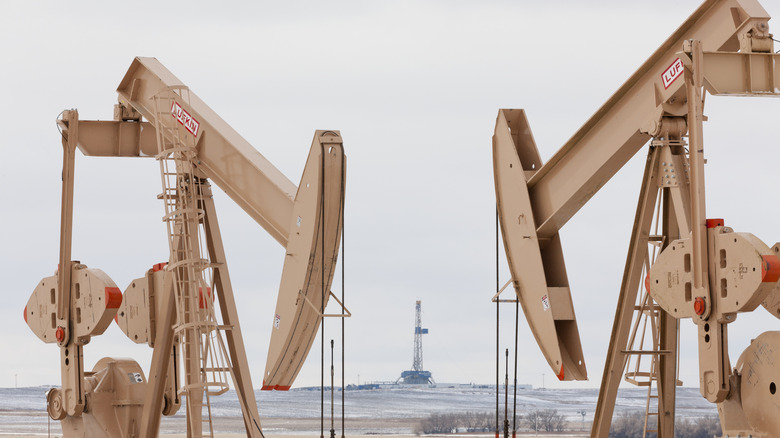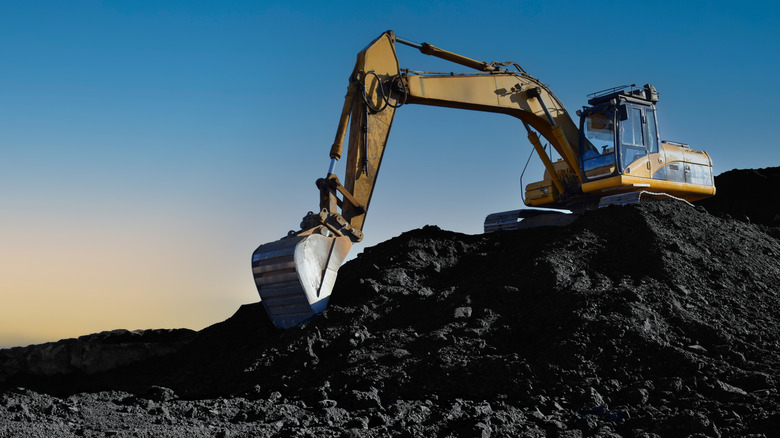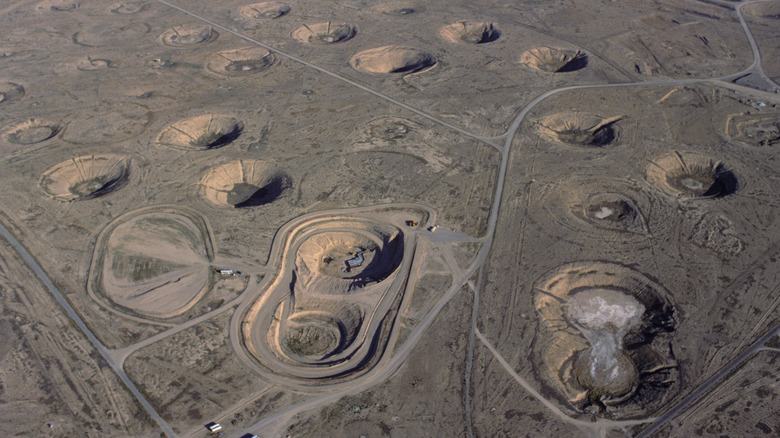Every Earthquake Cause Explained (Humans Are Responsible For 3 Of Them)
As the name suggests, an earthquake is an event that causes the earth to shake. In some cases, an earthquake can be so significant that it cracks open the ground, as well as human-made structures such as bridges and buildings. The intensity of these earthquakes are measured via the Richter scale and are assigned a value between 1 and 10. Any earthquake that has a magnitude of 6 or higher is considered a major event, and is also strong enough to cause significant loss of life and property.
Most earthquakes occur when two blocks become stuck and then slip past each other. However, there are many other types of earthquakes as well, some of which are created by natural causes. Others may even be human-induced. While it is worth knowing all the different types of earthquakes, it is also important to keep in mind that naturally occurring earthquakes are generally more intense. To date, the strongest earthquake on record measured at a 9.5 magnitude, and it was triggered by natural causes.
Most earthquakes are caused by friction between tectonic plates
Tectonic plate movements are the most common causes of earthquakes. The process of plate tectonics means that these entities are always in motion, and their edges (fault lines) can sometimes get stuck and cause friction. The affected plate then moves in an attempt to become unstuck, releasing a great amount of energy into the earth's crust. The energetic waves behind this action are what creates an earthquake. Perhaps the most notable example is the San Andreas Fault Line, which is 800 miles long and moves about 2 inches per year, triggering 10,000 earthquakes every year in southern California.
Earthquakes from tectonic plate movements are unpredictable. The larger these events, the more catastrophic the damage and ultimate loss of life. To date, the largest earthquake was a 9.5-magnitude event that occurred in Chile in 1960. This earthquake also triggered a distant type of tsunami event that affected people in the Pacific Ocean, all the way to the Philippines. However, it is also important to know that since tectonic plates are constantly moving, earthquakes are actually happening all the time. The key here is they are often so insignificant that they go unnoticed, and they are so small that they do not cause any damage; that's also true of many of those along the San Andreas Fault. As a reference point, most people feel earthquakes starting at a magnitude of 3.
The energy behind volcanic activities may lead to small earthquakes
Volcanoes and their different types of eruptions can cause increased seismic activity in two different ways. The first are volcanic eruptions, which can be some of the most energetic events on Earth. It's estimated that 60 volcanoes erupt in the world every year, and each one is measured on what is known as a volcanic explosivity index (VEI) ranging between 0 and 8. The greater a VEI, the greater the explosive impacts. Sometimes, a volcanic eruption can be strong enough to cause landslides, tsunamis, and even earthquakes. The movement of magma and subsequent lava during a volcanic eruption can create strong enough vibrations in the earth to cause small seismic events called long period earthquakes. It is also possible to experience volcano-related long period earthquakes from magma movement underneath Earth's surface before it even erupts. Scientists have long used these signs to help predict certain volcanic eruptions, including the lead-up to the 1980 eruption of Mount St. Helens.
Volcano-tectonic earthquakes are other types of volcanic earthquakes that develop because of the volcano's position near tectonic plates. Unlike long period earthquakes, these occur from pressure of the volcano against a fault line, and not from any impending eruptions. Overall, though, the earthquakes associated with volcanoes are considered smaller than other causes of seismic activity. For perspective, the largest volcanic earthquake to date was a 5.5-magnitude event underneath Mount St. Helens in 1981. What's more, most volcanic earthquakes occur up to 7 miles below the earth's surface, and can largely go undetected by the average person.
Landslides can be unexpected natural causes of earthquakes
Landslides often develop after earthquakes due to sudden instability in the ground. While the first type of landslide that comes to mind might involve dirt or mud careening down a steep slope, landslides can also include rocks, snow, and shallow debris. Any area of land impacted by ground movement can result in a landslide. When earthquakes cause landslides, they are usually 4.0 in magnitude or higher. Volcanic eruptions can create earthquakes and landslides, too.
While landslides are often secondary to earthquakes, sometimes the roles can be reversed. In fact, it is possible for a landslide to trigger seismic activity, too. Arguably, the larger the landslide, the higher the risk of a subsequent earthquake. Scientists believe the sudden and large amount of soil or rock redistribution can create stress points within the earth's crust. What's more, if this occurs near a fault that is already at risk of rupturing, this can increase the risk of a landslide-induced earthquake even more.
Hydraulic fracturing and injection wells may induce seismic activity
While the majority of earthquakes are naturally occurring, some instances of seismic activity are also human induced. One example is related to hydraulic fracturing, a commonly used extraction technique related to how oil wells work. Better known as "fracking," hydraulic fracturing can cause earthquakes on their own, but most are induced by increased waste fluids created during the process. These types of earthquakes are directly related to these injection wells, rather than hydraulic fracturing itself. Sometimes, fluids are erroneously injected near fault lines and can subsequently lead to earthquakes.
Such events have been observed more recently in the central U.S., where the United States Geological Survey (USGS) has noted an increased rate of earthquakes caused by fracking. In fact, it's thought that Oklahoma experiences more human-induced earthquakes than any other state. However, to date, the largest fracking-related earthquake occurred in nearby Texas. This was a 4.0-magnitude event in 2018. It's also important to note that while fracking and related waste fluids garner a lot of attention for negative consequences, such as earthquakes, wastewater injection wells create more seismic events than oil production.
Mine explosions are notorious for causing earthquakes
Mine explosions are considered other causes of human-induced seismic activity. Also known as "mining-induced seismicity," mine explosions can lead to earthquakes due to the sheer amount of energy released into rocks during the process. It's considered the second most common cause of human-induced earthquakes, making up an estimated 25% overall. These types of earthquakes are the most common in China, with the U.S. coming in second. Mining creates stress within bedrock, which can then crack over time and create the subsequent energy involved in seismic activities. Open-cut (or open-pit) coal mining is a notable risk factor due to the number of large rocks removed during the process.
Most mine explosion-related earthquakes range from 3 to 4 in magnitude. To date, the worst case of mining-induced seismicity is a 6.1-magnitude earthquake that occurred after activities in a Russian underground coal mine. Researchers in different parts of the world have also noted a direct association between increased seismic activity and coal mine activities. Many of these are smaller earthquakes that develop close to the mining site. This human-induced problem is among the many associated with coal production, such as coal transport and usage.
Nuclear explosions can lead to small earthquakes, too
As humans began experimenting with nuclear technologies, there were several notable consequences. Aside from the advantages and disadvantages of nuclear energy, humans have also been affected by nuclear weapons testing. While you might already be familiar with the negative effects on human health, there's also the chance of earthquakes to consider. Not all cases of nuclear explosions result in earthquakes, but there is still a risk of increased seismic activity connected with these types of events. Typically, any earthquakes related to nuclear activities tend to be smaller than the explosions they originate from.
To understand how these explosions might induce seismic activity, scientists believe that underground explosions might directly place stress on tectonic plates and trigger a subsequent earthquake, especially near fault lines. Sometimes, seismic waves can even trigger earthquakes up to hundreds of miles away from the explosion site. Citizens have also raised concerns about nuclear testing and possible earthquakes. One notable example is the former nuclear Nevada Test Site, which was the location of 928 nuclear weapons tests from 1951 until 1992. During the 1960s, parts of northern California experienced an increased rate of seismic activity, but researchers could not confirm that these earthquakes occurred at the same time as nuclear explosions.
